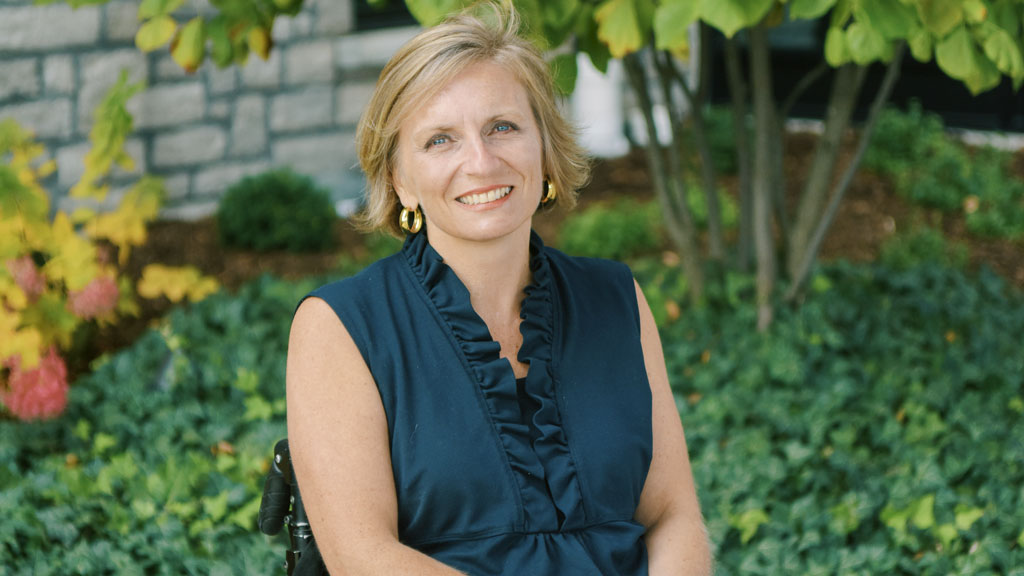Every skilled trade that is involved in constructing a house, building or commercial space needs to know about accessibility because when it comes to accessibility every detail matters, says Julie Sawchuk, accessibility strategist at Sawchuk Accessible Solutions.
“When you use a wheelchair like I do, I have a roll under sink,” Sawchuk explained to a virtual audience at the Persons with Exceptionalities Conference hosted by Skills Ontario March 30.
“I had to teach the plumber what that meant for having knee clearance under the sink and not rubbing my knees under the sink and transferring heat to the skin on my legs that I can’t feel.
“I had to teach my electrician where the most accessible places are for light switches so I can have them right beside my bed so that I can turn out the lights when I’m in bed instead of turning out the lights and rolling through the dark to get into bed.
“I had to teach my framer about putting backing in the walls beside the toilet and in the shower so that we would be able to attach grab bars firmly to the walls.”
About five years ago, Sawchuk, a 41-year-old high school science teacher at the time, was training for a triathlon when her life changed forever.
“That’s what I was doing on a Thursday morning when I got hit by a car,” Sawchuk said. “The car was driving behind me, didn’t see me and just drove right into me. I got thrown into the ditch about 30 feet. I landed on my face. I split open my forehead, broke my nose, broke my teeth, split open my chin. I tore my trachea, I broke seven ribs and I broke two vertebrae in my spine.
“The t4 vertebrae, it exploded and it shot a bone fragment into my spinal cord and it caused paralysis. A spinal cord injury and that means that nothing below my chest level functions the way a regular body does.”
She loved being a teacher and was devastated at the thought of never teaching again.
“What I did was I didn’t let myself tell myself that I couldn’t do it. That’s one of the messages I want you guys to hear,” said Sawchuk, who is a professional speaker and authored three books on accessible spaces. “I’m not back in the classroom but I am definitely teaching.”
Prior to the incident, Sawchuk thought she knew about accessible spaces.
If you are a student with an exceptionality, we need you in the skilled trades… you think differently, you learn differently,
— Julie Sawchuk
Sawchuk Accessible Solutions
“I had no idea,” she said. “In the past five years I learned a tonne of stuff about how we build our spaces. The people that need accessibility, they don’t communicate to the people that do the designing, the constructing, the interior design, the plumbing, the electrical. All of those people are not the people that need spaces to be set up in an accessible way.”
“You have had to learn how to fit yourself in and you are still learning. You are always going to be learning,” Sawchuk noted. “I need you guys to help me get the skilled trades to see that accessibility matters and what it means to do it right, why doing it right and setting things up properly makes a difference.”
Individuals with exceptionalities can bring a unique perspective to designing and constructing a space that is truly accessible for the people who use it.
“If you are a student with an exceptionality, we need you in the skilled trades,” Sawchuk said. “If you have an exceptionality, you think differently, you learn differently, you move physically differently, you communicate differently.
“You have lived your life as a problem solver and you are going to be able to take the life experiences that you have and apply them to the skilled trades in a way that no one else has been able to do.”
Twenty per cent of the Canadian population over the age of 18 identify as having a disability and 100 per cent of the population will experience life with a disability at some point, whether it’s permanent or temporary, Sawchuk noted.
“It’s about education,” she said. “The skilled trades sometimes do things the way they’ve always done them, so we need you guys to come in and turn on your creative brains.
“We need to flip how we build our spaces and it’s the trades that are going to make that happen.”
Follow the author on Twitter @DCN_Angela.











Recent Comments